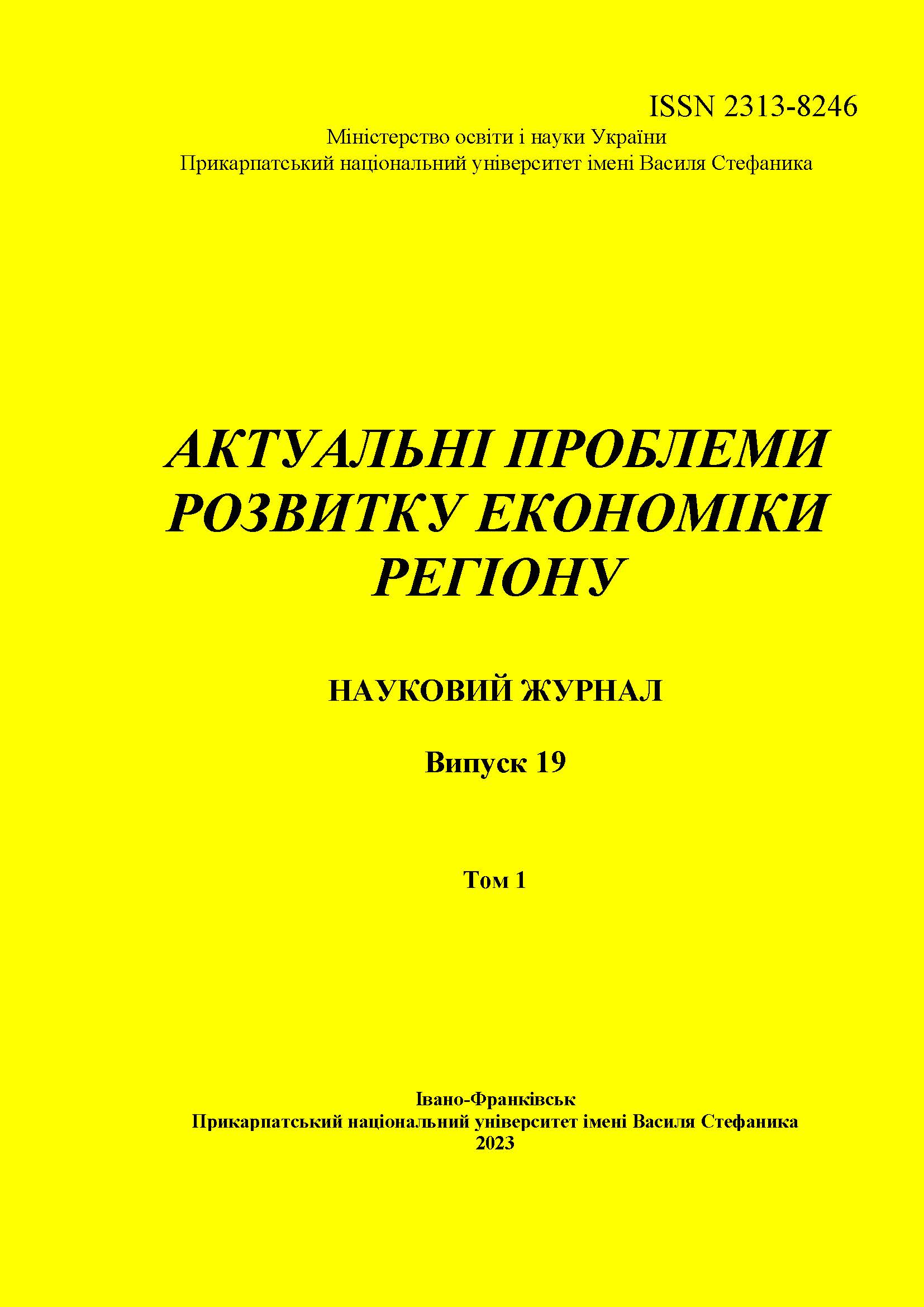CAUSES AND CURRENT STATE OF THE ENERGY CRISIS IN EUROPEAN COUNTRIES
DOI:
https://doi.org/10.15330/apred.1.19.61-69Keywords:
energy crisis, energy resources, alternative energy, LNG marketAbstract
The geopolitical situation in the world has always had a direct impact on the global energy market and energy trade. In recent years, the energy situation in Europe has been deteriorating significantly due to a series of crisis events that have shaken the world.
The current energy crisis is perhaps the most important problem not only for Ukraine but for the whole world. It is also a global environmental problem. Now, more than ever before, all world leaders and international organisations are concerned about energy supplies and the energy situation in the world as a whole. To solve the problem, it is necessary to understand the causes of the energy crisis and its current state. Therefore, the purpose of this article is to study the stages and causes of the energy crisis and to characterise its current state in European countries.
A number of works by such well-known domestic and foreign scholars as S. Kondratov, Yu. Skaletsky, V.I. Kravtsov, D.S. Biryukov, R. Eden, L. Worrell, etc.
The article examines the causes of the energy crisis in Europe and the role of quarantine restrictions related to the Covid-19 pandemic. The author examines how the situation in the energy markets has changed since the beginning of the full-scale invasion of Ukraine. An analysis of price changes in the energy market for producers and consumers in the EU during 2021-2023 is carried out. The author considers what measures the EU countries are taking to normalise the situation and overcome the consequences of the energy crisis. The article analyses the development of the LNG market as an alternative to natural gas supplies from Russia, examines the increase in imports from the United States and the expansion of LNG production infrastructure in the European Union. The introduction of alternative energy is considered as a promising way out of the energy crisis. The study shows that Europe's energy system is currently experiencing a large-scale crisis due to quarantine restrictions and the unstable political situation in the world. It is proved that the energy system is also undergoing large-scale transformations due to the refusal to import Russian energy resources.
References
2. “Gas Market Report Q3-2021.” International energy agency, iea.blob.core.windows.net/assets/4fee1942-b380-43f8-bd86-671a742db18e/GasMarketReportQ32021_includingGas2021Analysisandforecastto2024.pdf Accessed 1 April 2023
3. “Europe's energy crisis conundrum.” European Union Institute for Security Studies, www.iss.europa.eu/content/europes-energy-crisis-conundrum Accessed 4 April 2023
4. Karmaker, C.L., Ahmed, T., Ahmed, S., Ali, S.M., Moktadir, M.A., and G. Kabir. “Improving supply chain sustainability in the context of COVID-19 pandemic in an emerging economy: exploring drivers using an integrated model.” Sciencedirect, www.sciencedirect.com/science/article/pii/S2352550920308794 Accessed 5 April 2023
5. Eurostat. “Annual inflation in the euro area and its main components, December 2011 - December 2021.” European Commission, ec.europa.eu/eurostat/statistics-explained/index.php?title=File:Euro_area_annual_inflation_and_its_main_components,_December_2011_-_December_2021.png Accessed 8 April 2023
6. Boubaker, S., Goodell, J.W., Pandey, D.K., and V. Kumari. “Heterogeneous influences of wars on global equity markets: Evidence from the invasion of Ukraine.” Finance Research Letters, no.48, 2022, pp.102934. Accessed 8 April 2023
7. Eurostat. European Commission, ec.europa.eu/eurostat/web/products-eurostat-news/-/edn-20220210-2. Accessed 10 May 2023
8. Council of the European Union, www.consilium.europa.eu/en/infographics/lng-infrastructure-in-the-eu/ Accessed 10 April 2023
9. “Does Europe Face an Even Tougher Natural Gas Market in 2023?” Bloomberg, www.bloomberg.com/graphics/europe-energy-crisis-updates/ Accessed 10 April 2023
10. Umbach, Frank. “The European Union’s LNG supply security.” gisreportsonline, www.gisreportsonline.com/r/eu-lng/ Accessed 11 April 2023
11. “REPowerEU: a plan to rapidly reduce dependence on Russian fossil fuels and rapidly transition to green.” European Commission, ec.europa.eu/commission/presscorner/detail/en/IP_22_3131. Accessed 13 April 2023
12. “How the EU is boosting renewable energy.” European Parliament, www.europarl.europa.eu/news/en/headlines/society/20221128STO58001/how-the-eu-is-boosting-renewable-energy. Accessed 15 April 2023
Downloads
Published
Issue
Section
License
- Authors retain copyright and grant the journal right of first publication with the work simultaneously licensed under a Creative Commons Attribution NonCommercial NoDerivs 4.0 Unported License that allows others to share the work with an acknowledgement of the work's authorship and initial publication in this journal.
- Authors are able to enter into separate, additional contractual arrangements for the non-exclusive distribution of the journal's published version of the work (e.g., post it to an institutional repository or publish it in a book), with an acknowledgement of its initial publication in this journal.
- Authors are permitted and encouraged to post their work online (e.g., in institutional repositories or on their website) prior to and during the submission process, as it can lead to productive exchanges, as well as earlier and greater citation of published work (See The Effect of Open Access)


